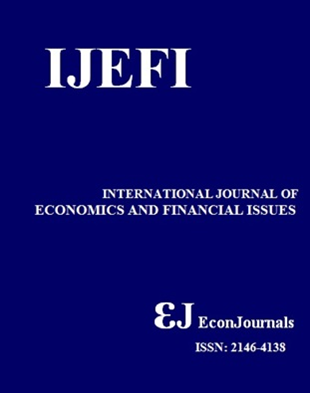The Effect of Financial Technology on Capital Inflows in Low- and Middle-Income Countries
DOI:
https://doi.org/10.32479/ijefi.19202Keywords:
Financial Technology, Capital, Inflow and OutflowAbstract
This study examines the impact of financial technology on capital inflows and their causal relationship in select low- and middle-income African nations. Secondary data from the World Development Indicator Database (2000-2022) was used, with net financial flows as a proxy for capital inflows. Financial technology indicators included individuals using the internet (IUI), secure internet servers (SIUS), and automated teller machines (ATM). The feasible generalized least squares approach was applied to account for autocorrelation and slope heterogeneity, alongside pre and post estimation tests for robustness. Findings from sixteen low-income African countries indicate that IUI and SIUS positively and significantly affect capital inflows, while ATM has a negative and insignificant impact. In contrast, for sixteen middle-income African countries, only IUI has a positive and significant effect, SIUS shows a positive but negligible link, and ATM has a negative and significant impact on capital inflows. Causality results reveal a unidirectional relationship between ATMs and capital inflows and a bidirectional relationship between IUI and capital inflows in low-income countries, with no causal link for SIUS. In middle-income countries, there is a bidirectional relationship between IUI and capital inflows, a unidirectional link for ATMs, and no causal relationship for SIUS. These findings highlight the need for governments in low- and middle-income African nations to address barriers to financial technology adoption and develop strategies to enhance its role in attracting capital inflows.Downloads
Downloads
Published
2025-06-18
How to Cite
Danladi , J. D., Adeleke, I., Boluwaji, O. D., Oyewole, K. S., Debo-Ajagunna, A. A., Obamoyegun, O. J., & Lawal, A. M. (2025). The Effect of Financial Technology on Capital Inflows in Low- and Middle-Income Countries. International Journal of Economics and Financial Issues, 15(4), 416–426. https://doi.org/10.32479/ijefi.19202
Issue
Section
Articles
Views
- Abstract 93
- FULL TEXT 83




